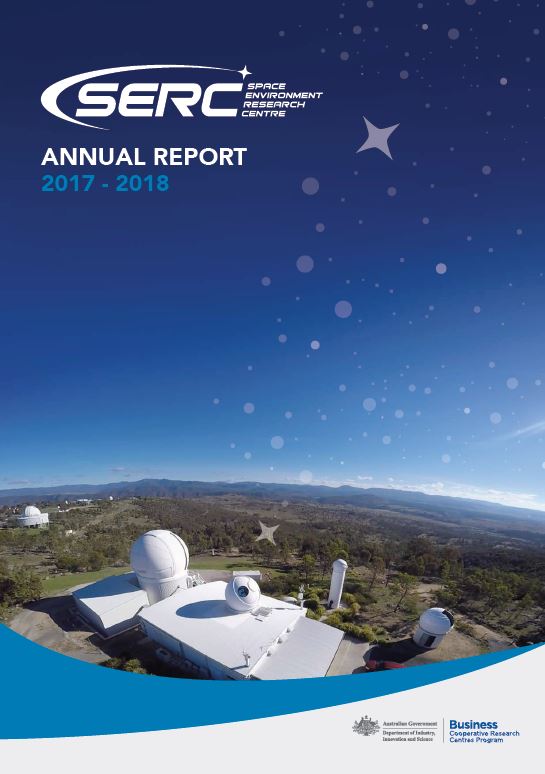About the Space Environment Management CRC
In the modern developed world, it would be difficult to get through a single day without making use of some form of satellite technology.
If you make a phone call from a mobile phone, use an ATM or GPS, watch TV, send an email, or surf the net, you have more than likely used space-enabled technology.
Satellite technology, and our modern way of life, is threatened by the mounting risk of collisions between satellites and space debris. This risk currently threatens individual spacecraft and ultimately the viability of the entire space environment.
Although this is a global problem, Australia is a world leader in optical space tracking which has emerged as a key technology for protecting satellites. Australian infrastructure and debris data now offer the most expeditious route for research, development and feasibility testing of diverse global efforts to protect satellites from debris.
The Space Environment Management CRC, managed by the Space Environment Research Centre (SERC), was established to build on Australian and international expertise in measurement, monitoring, analysis and management of space debris and to develop technologies to preserve the space environment.
SERC brought together expertise and resources from leading universities, international space agencies and commercial research providers to mitigate and ultimately remove the risk of space debris collisions.
The Space Environment Research Centre Limited was a registered charity.
Charity ABN: 70 169 043 467
SEM CRC Mission
SERC's mission was to consolidate independent research efforts to achieve a critical mass of effort to form a platform for new investment, by providing:
- a transparent framework for international research collaboration, ensuring equity for all collaborators regardless of nationality or whether a private or public entity;
- access to state-of-the-art space research programs and infrastructure;
- new funds for consolidating research program synergies and investigating new avenues; and
- exemplary management of research, consistent focus and strategic leadership.
SEM CRC Vision
SERC’s vision was to be a collaboration vehicle of choice for compatible national, international and commercial efforts to address issues arising from space debris.
SERC technology would play a key role in practical global efforts for space debris management, mitigation and removal.
SERC would become self-sustaining based on the long-term value of its developed technology.
SEM CRC Core Values
SERC was committed to achieving outcomes through excellence in technology, the objectivity and integrity of its processes, and the diligence of our efforts.
Building Capacity and Capability
The SEM CRC Education program was designed to build both capacity and capability in the Australian space sector. To that end, SERC exceeded its education program milestones.
The CRC supported:
26
PhD Students
5
Honours Students
15
Research Fellows
503
Publications
15
Research Projects
Further Information
For further information on the Space Environment Management CRC, you can access our Annual Reports here:




















